Mendoza, Argentina - Julio Ballofet's Ciudad Nuevo
![]()
Earthquake of 1861
On the evening of 20 March, 1861, Mendocinos heard a very low rumble. Moments later a powerful terremoto (earthquake) struck the city, causing catastrophic damage, leveling most buildings, killing thousands of people and injuring more. In seconds, the city lay in ruins.
Historic images of the city, before and after the earthquake ...
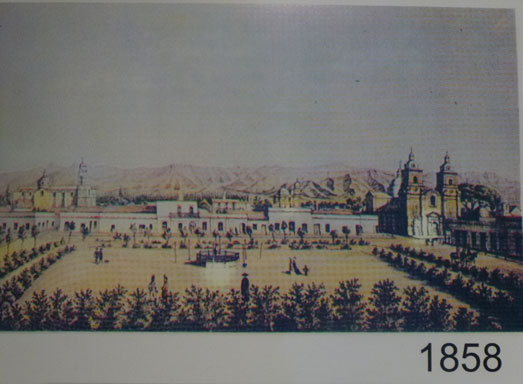
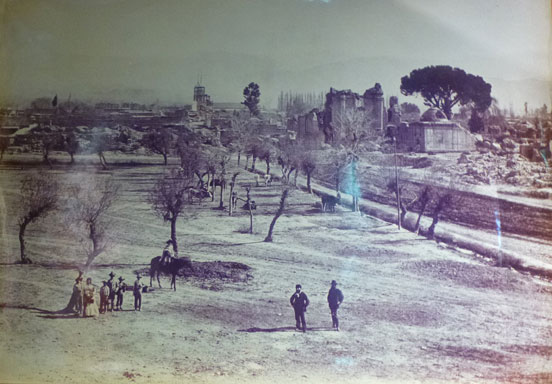
... and the ruins of the church in the upper right corner of the above pictures, as seen today.
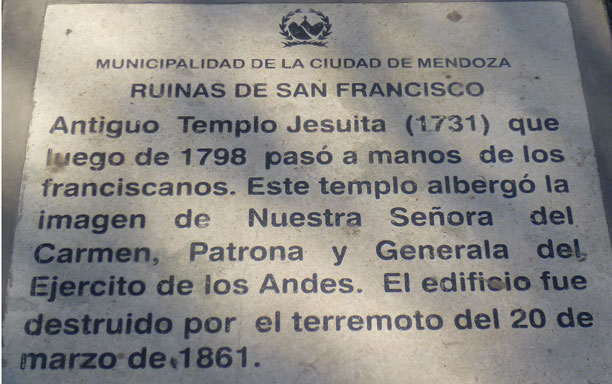
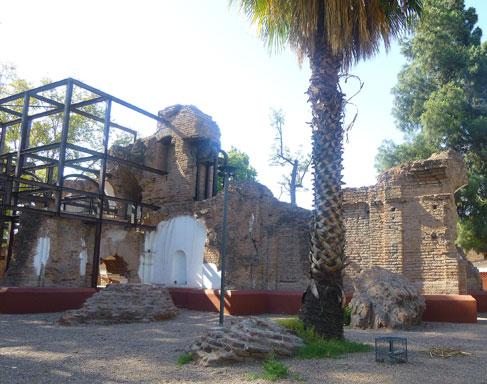
One of the victims was a young Frenchman, Augusto Bravard, whose friend, Julio Jeronimo Ballofet, traveled from Parana' to assist with the recovery. Balloffet, a qualified surveyor from Saint Etienne, France, viewed the devastation as an opportunity for Mendoza to remake itself into a modern, 19th century city.He offered his services to the city administration and after some time and controversy, was accepted.
He developed a city plan and recommended that the city centre be moved a few kilometers southwest, away from the earthquake "hotspot". The plan envisioned a central plaza of four blocks square. Just a block away from each corner of this large plaza, he envisioned another smaller plaza. Just beyond these four smaller plazas, broad avenues in a larger square were planned. The large central plaza, Plaza Independencia, and the four smaller nearby plazas would provide open space for people to gather in case of another large earthquake. The broad avenues would enable evacuation to proceed more readily. Another feature of the plan was a system of street side canals, fed by the main canal, to deliver water for street trees to provide shade and cooling during the hot summers.
At first, the city fathers balked at these concepts but in the end, Balloffet made his case and the plan was implemented. Work began right away, but it took many years for the city to regain normality. Recovery was essentially complete by 1884, when the railroad arrived, connecting Mendoza to the rest of Argentina.
Mendoza Today
Today, the population of the ciudad plus its surrounding suburbs has reached 1 million people, spreading way beyond the original city plan, but the original grid of streets has been retained and expanded. The great Plaza Independencia provides a green space where people gather in the evenings to walk, listen to music, sit and chat, shop for folk art, trinkets and ice cream.
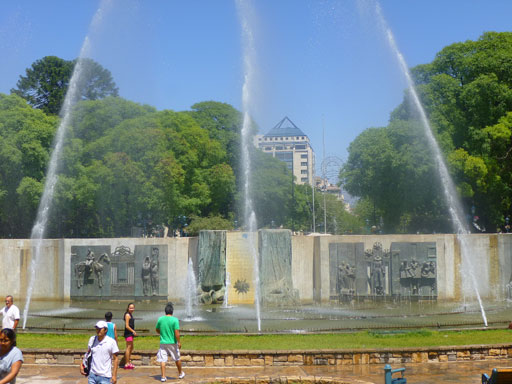
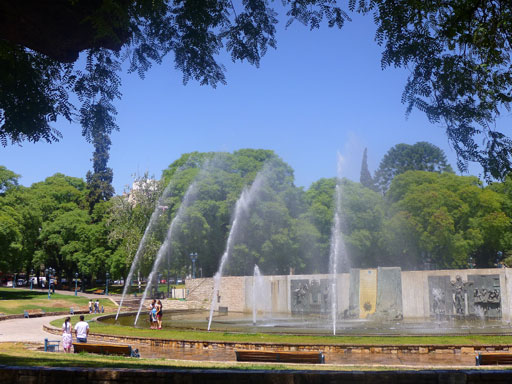
A nearby pedestrian street, Sarmiento, has many cafes with outdoor tables for drinks and dining. The four smaller plazas offer open spaces nicely adorned with statues and formal landscaping. Below are views of the four plazas, San Martin, Espana, Chile and Italia (clockwise from the upper left).
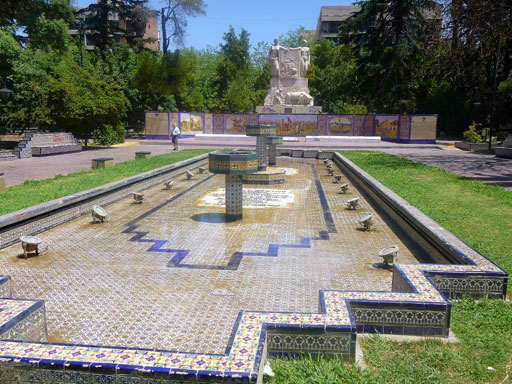
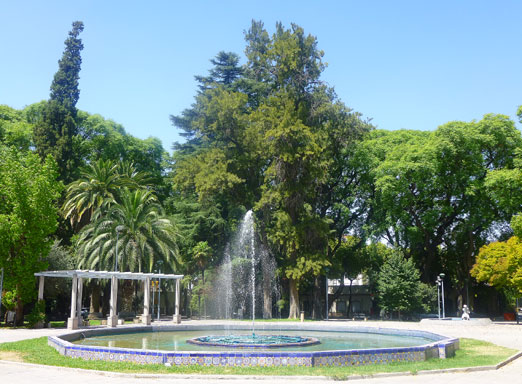
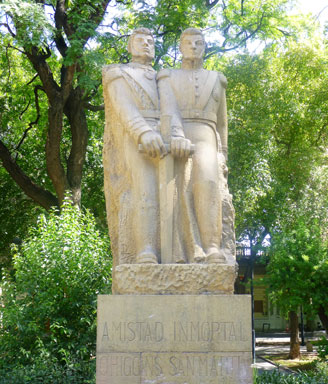
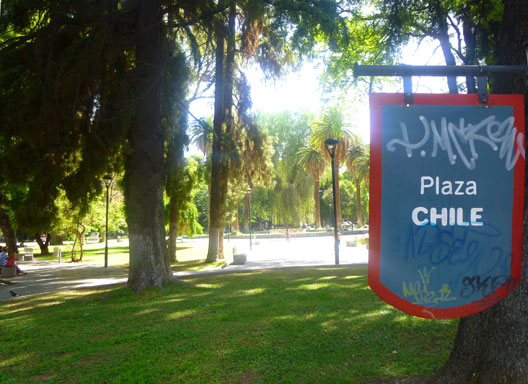
Just to the west of the city, the Parque San Martin offers residents a large natural area with a dramatic entrance gate, beautiful landscaping and many recreation opportunities as well.
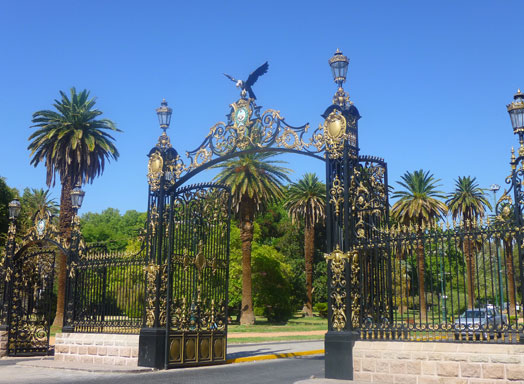
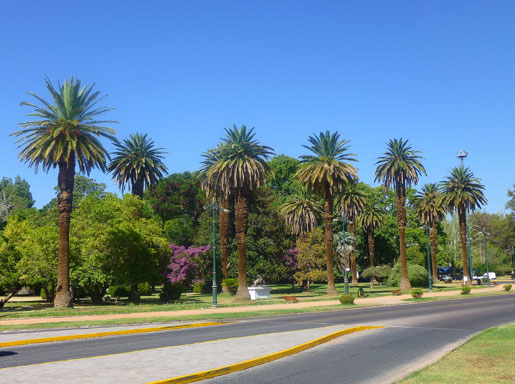
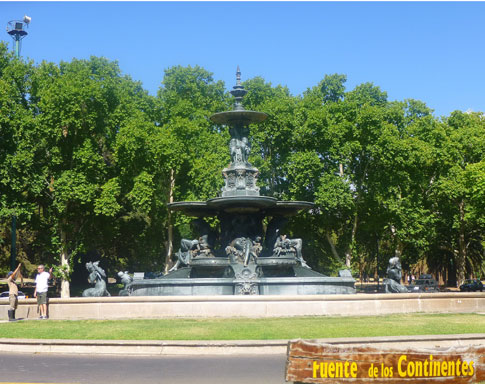
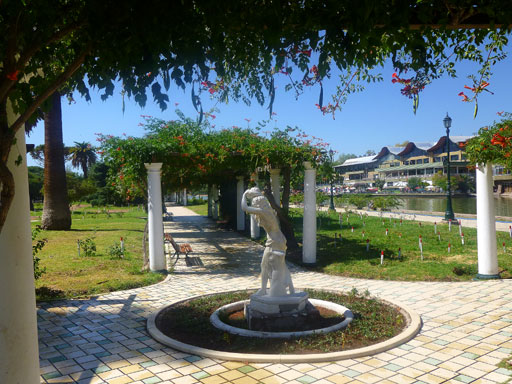
Lacking colonial era buildings, the city has a good stock of worthy 19th and 20th century architecture to admire. The advances in construction of earthquake resistant structures have enabled the city to allow taller buildings than the city fathers of the 1880s allowed.
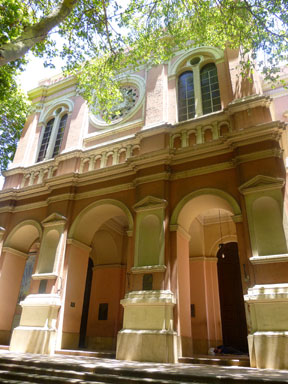
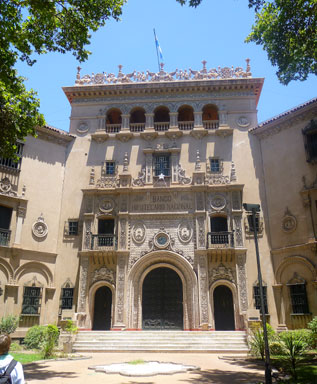
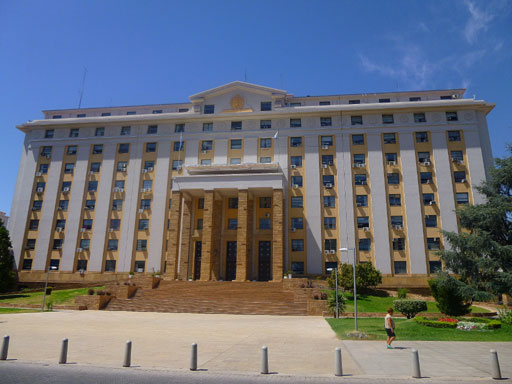
Preservation of the system of streetside canals has allowed the canopy of street trees to flourish, providing welcome shade to folks walking from place to place on hot summer days.
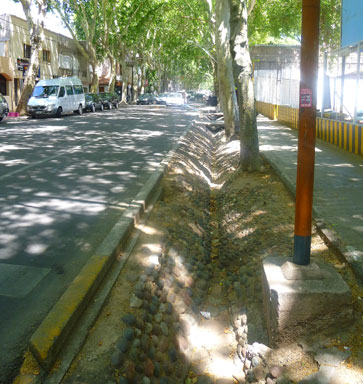
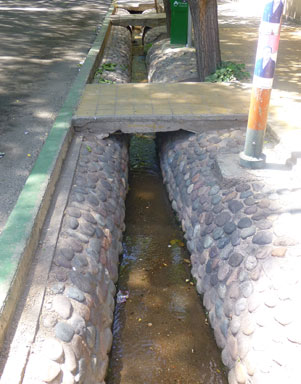
Other mobility options include frequent buses and, just recently, the Metrotranvia, a tram line, has added another alternative to automobile travel.
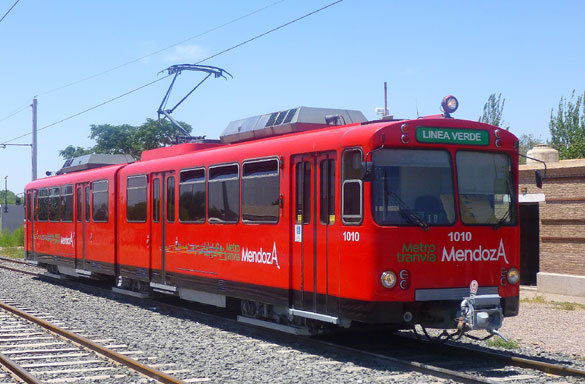
The majestic peaks of the Andes tower to the west of the city, providing an eternally beautiful backdrop for the evolving urban constructions.
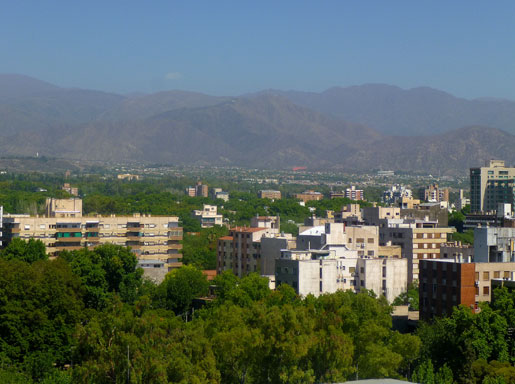
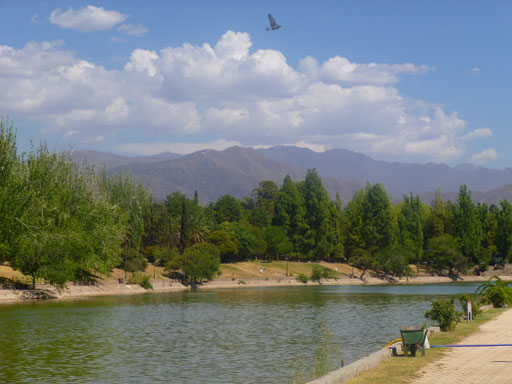
Mendoza Province has become the epicentre of Argentina's wine industry, and the Ciudad of Mendoza, its capital, has declared itself to be the "International Capital of Wine". Visitors (including us) come from all over the world to tour the vineyards ...
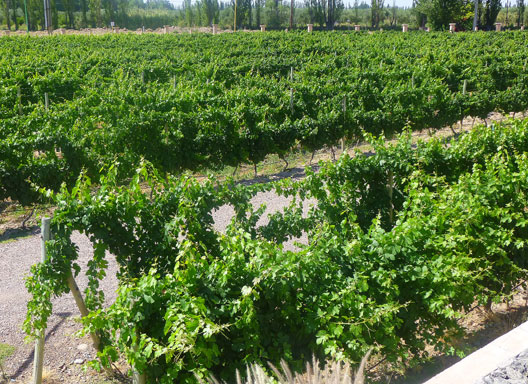
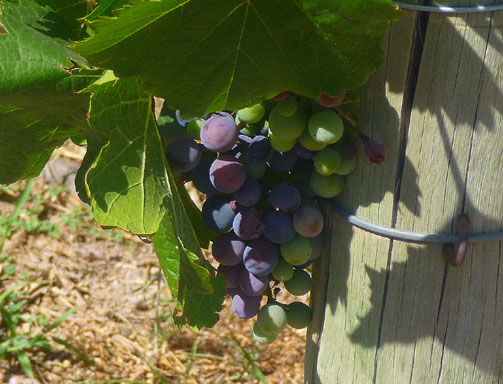
... and stop at the bodegas to taste the Malbecs, Cabernet Sauvignons, and other vintages of superb flavor and style!
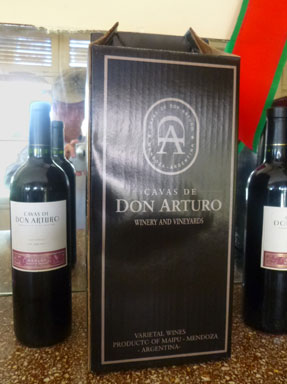
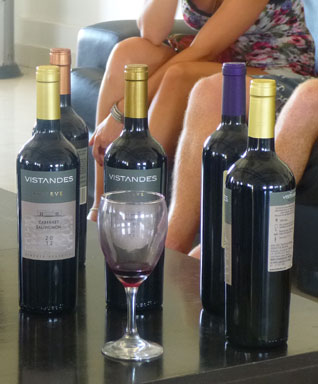
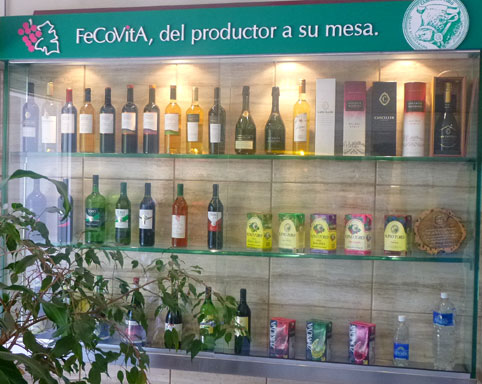
As we explored the city, enjoyed the fine wines, sheltered in the shade of the great trees, and sat in the plaza just watching people, we realized that Julio Ballofet's plan has stood the test of time quite well. Mendoza is truly a People Friendly City!
Click here to return to our Argentina 2013/2014 page
Click here to return to our Searching the World page
![]()